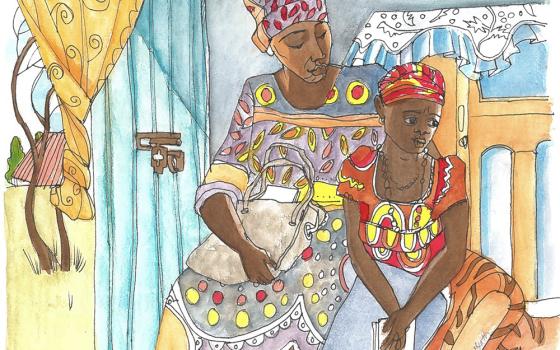It was more than a case of a missing child. It was a case that, eventually, changed childhood itself in this country.
If you've ever wondered why our kids stay inside after school and play video games, rarely jump on their bikes to go visit a friend, and never walk to the corner store for candy or a soda, the answer begins back in 1979 -- and delivered a chilling twist a few weeks ago, with an arrest 33 years too late.
The boy's name was Etan Patz, and he lived with his parents in what was then a funky part of Manhattan called SoHo. Old factories and garment businesses had moved out of brick-walled lofts with tall windows and lots of light, and slowly, artists and writers were moving in. A city that had lived through riots and blackouts, crime waves and drug epidemics, saw signs that perhaps it was not dead after all. If shabby SoHo could fix itself, there was hope.
On May 25, 1979, 6-year-old Etan begged his mom to let him walk the one block from their building on Prince Street to the school bus stop at the corner. She reluctantly agreed -- the family knew artists and shopkeepers up and down the street. What could go wrong?
The boy was never seen again.
What followed was beyond a manhunt. The sudden disappearance captured the attention of every mother and father in the country. Etan was the first missing child to have his face placed on a milk carton.
I was a college senior that year, living in Manhattan. SoHo grabbed my attention for the way families had moved in to reclaim it and help New York get back on its feet. When my parents -- refugees from the city by that point, living in the suburbs -- came to visit, I took them there, to show them the city was not through, not yet.
But Etan's case pushed all that away. The raw fear the disappearance engendered is hard to describe now: like some Japanese-made horror flick, it was as if the morally wounded monster of urban decline and decay had risen up again to threaten the townspeople in the final reel.
Across the country, women were flowing into the workplace in large numbers, unable to watch over their children throughout the day. That era when a neighborhood full of at-home mothers was around to check through windows and patrol the sidewalks was in its final throes -- and Etan Patz scared parents to their marrow.
As the mystery dragged on over the decades, that fear never seemed to loosen. Today, SoHo is a downtown wonderland, a Beverly Hills of overpriced clothing stores and high-end restaurants. There is hardly a struggling artist to be seen. Crime has fallen so low as to barely register as a topic of conversation in most American cities, and even in these tough times, civility seems to be holding its own.
But the lives of too many kids still follow the rules set up after Etan went missing. They go nowhere on their own, indoors is better than outside, and spontaneity is just too risky.
The man arrested last week (he confessed, too, but his lawyers contend he is mentally ill and delusional) lived a block away from Etan and his parents, right by the school bus stop. He says he lured the boy into the basement of the local grocery store, strangled him there. He was, it turned out, the danger next door, the monster who had been there all the time, unrecognized and overlooked.
Thirty-three years later, he has changed childhood. It may never change back.



